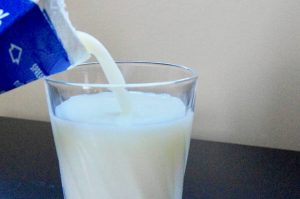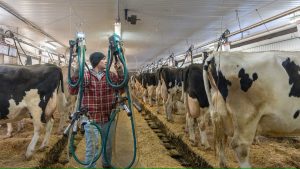
Canada’s dairy industry will soon be defending a new front in its ongoing battle to preserve its supply management system in the face of international trade challenges.
On Thursday, New Zealand’s minister for trade and export growth, Damien O’Connor, announced his government has initiated dispute settlement proceedings under the Comprehensive and Progressive Agreement for Trans-Pacific Partnership (CPTPP). It’s the first time consultations have been triggered in an attempt to resolve differences between signatories of the eight-member Pacific Rim trading bloc.
The CPTPP came into effect at the end of 2018, with Canada and New Zealand among its original six members. New Zealand is an aggressive global exporter of dairy products, putting it on a collision course with Canada’s relatively closed domestic market both during the original negotiations, and as the deal has been implemented.
“Our priority is to ensure that New Zealand exporters have meaningful access to the benefits negotiated under CPTPP, and that all parties fulfil the commitments they have made to each other under the agreement,” O’Connor said in a release.
While New Zealand’s relationship with Canada is “excellent,” the minister said, the two countries have engaged on this issue “over a number of years and these proceedings will not come as any surprise to them.
“Occasionally even good friends disagree, and it’s for that reason dispute settlement mechanisms in free trade agreements such as CPTPP exist to provide a neutral forum for settling such disputes when they arise,” O’Connor said.
Canada was notified Thursday, the New Zealand government release said. Canada has seven days to respond, after which the two countries will begin formal consultations. If those don’t resolve their differences, New Zealand can request a panel to adjudicate the dispute, according to the provisions found in Chapter 28 of the agreement.
International Trade Minister Mary Ng’s office did not immediately respond to a request for comment from CBC News.
Latest in a line of disputes
It’s not the first time Canada’s system for controlling the importation of dairy products has been targeted by trading partners and criticized as unfairly protectionist. Similar issues emerged with cheese imports under the Comprehensive Economic and Trade Agreement with the European Union, although, so far formal arbitration has not been required.
To stabilize domestic prices and maintain a consistent national supply of cow’s milk and other processed dairy products, the federal government uses prohibitively high tariffs to discourage any imports beyond the minimum levels required by the World Trade Organization and negotiated trade agreements with specific partners.
The CPTPP guaranteed member countries a specific amount of tariff-free access to Canada’s market in 20 different categories of dairy, egg and poultry products — all sectors that are part of Canada’s supply management system.
In order to import these named products tariff-free, interested businesses must apply to Global Affairs Canada for a share of the annual quota for the specific commodity. The ultimate decision over who gets to hold how much quota for a given year rests with the trade minister.
Less than a month before the CPTPP came into effect, the Liberal government announced it would allocate between 80 and 90 per cent of the import licences to domestic dairy processors, with a much smaller share available for dairy distributors. Grocery retailers — businesses that directly import and sell food products to consumers — were shut out entirely.
For Canada’s dairy sector, it was a form of compensation for the market share they stood to lose to foreign competitors. Processors already active in the market, industry spokespeople argued, would know best what kind of complementary foreign imports could fill market gaps for consumers.
Retailers, not to mention foreign producers, called foul, pointing out that domestic processors have no incentive to import goods that compete with their own. They warned Canada may not import as much foreign dairy as the agreement specified, although the federal government put rules in place to supposedly prevent importers from applying but then not fully exercising their right to import tariff-free.
Fill rates suggest unused quota
Import data posted on the Global Affairs website suggests New Zealand’s concerns may be founded, at least for some products. Although Canada was close to importing the full quota negotiated for butter under the CPTPP last year, the data for cheese and other commodities show a much bigger gap between what was bargained at the negotiating table and what’s been realized at the border.
That data doesn’t specify how many of those imports came from New Zealand. Decisions over what to import from which CPTPP countries rest with the holder of the import licence. The other major dairy exporter among current CPTPP partners is Australia.
The quota volumes set for CPTPP partners predate the departure of the United States from the agreement following the election of former U.S. president Donald Trump, and the subsequent renegotiation of the North American Free Trade Agreement (NAFTA), in which the U.S. also successfully negotiated additional tariff-free access to Canada’s dairy market in a long list of product categories.
Once the Americans left, not all of the CPTPP categories, which include fresh products, remained practical and competitive for producers farther away to fill, especially after international shipping took a hit during the COVID-19 pandemic and remains significantly more expensive as supply chains continue to strain amid disruptive geo-political events like the war in Ukraine.
The United Kingdom is in the early stages of talks to join the CPTPP in the future. Depending on how those accession negotiations go, the U.K. could compete for this market share in the future.
Thursday’s challenge shows New Zealand hasn’t forgotten about its grievances. And it may be seeing fresh momentum for its side of the argument, following a decision by a panel established under the Canada-U.S.-Mexico Agreement, CUSMA, the successor agreement to NAFTA, that found Canada’s administration of similar import licences wasn’t consistent with what the Americans believed they had signed onto when NAFTA was renegotiated.
In early March, Canada announced changes to its CUSMA quota allocation policies, eliminating the pool reserved only for processors. However, the CUSMA panel decision maintained the right of the trade minister to make the final decision. The end implications of these changes remain unclear.
The U.S., for its part, is still sounding skeptical.
During a visit to Ottawa last week, United States Trade Representative Katherine Tai called access issues with Canada’s dairy market a “source of great frustration.” While she and Ng are still “talking and thrashing out the details for how we might be able to make some progress,” Tai said “it’s been a thorny issue for decades, for sure.”
More compensation coming
Canada’s dairy industry remains bitter for having to take a succession of hits to its market in order for Canada to land several subsequent trade deals under the Liberals. In return for taking these hits for the team, they’ve demanded compensation from Canadian taxpayers.
On top of benefits from the way import licences are allocated, Canadian farmers are receiving up to $1.75 billion in direct payments over the first four years of the implementation of both the CPTPP and Canada’s trade agreement with the European Union. The owner of a farm with 80 dairy cows, for example, was awarded approximately $38,000 each year.
The 2021 federal budget also established a $292.5 million investment fund for domestic dairy processors, to help them compete.
Finance Minister Chrystia Freeland said in her spring budget that her department will include additional domestic dairy sector compensation for losses attributable to CUSMA in next fall’s economic statement.
Mathieu Frigon, the president of the Dairy Processors Association of Canada, told CBC News he’s aware of New Zealand’s request for consultations and his organization is committed to working collaboratively with the federal government “to defend our country’s ability to design and implement tariff-rate quota allocation mechanisms that meet its trade obligations and support its domestic production.”

























